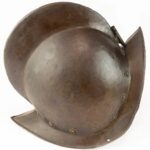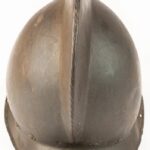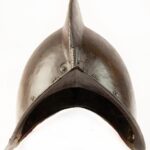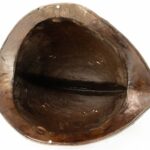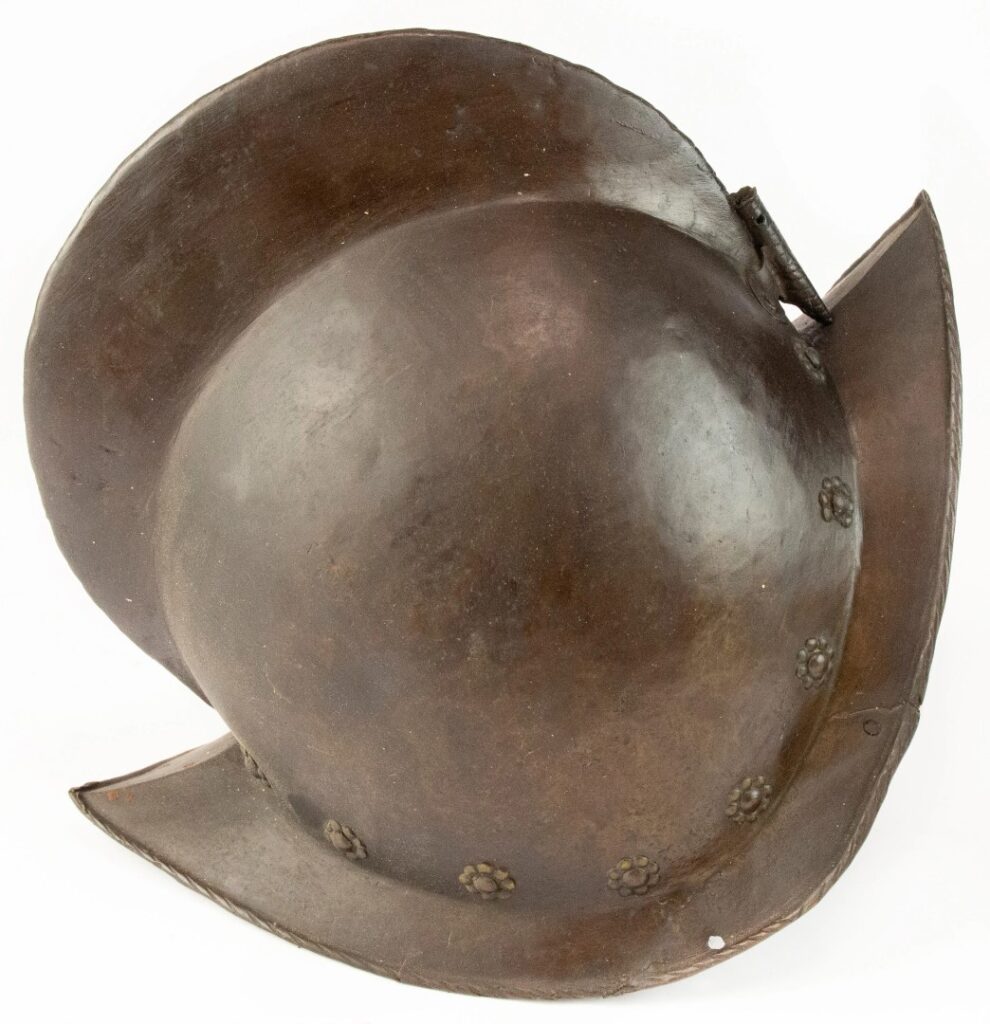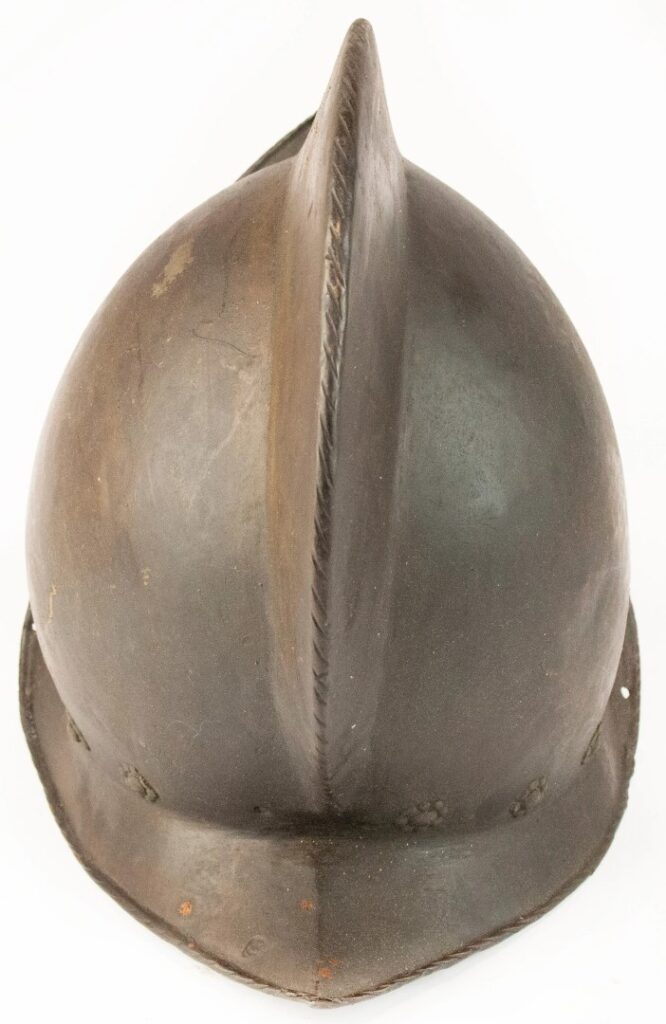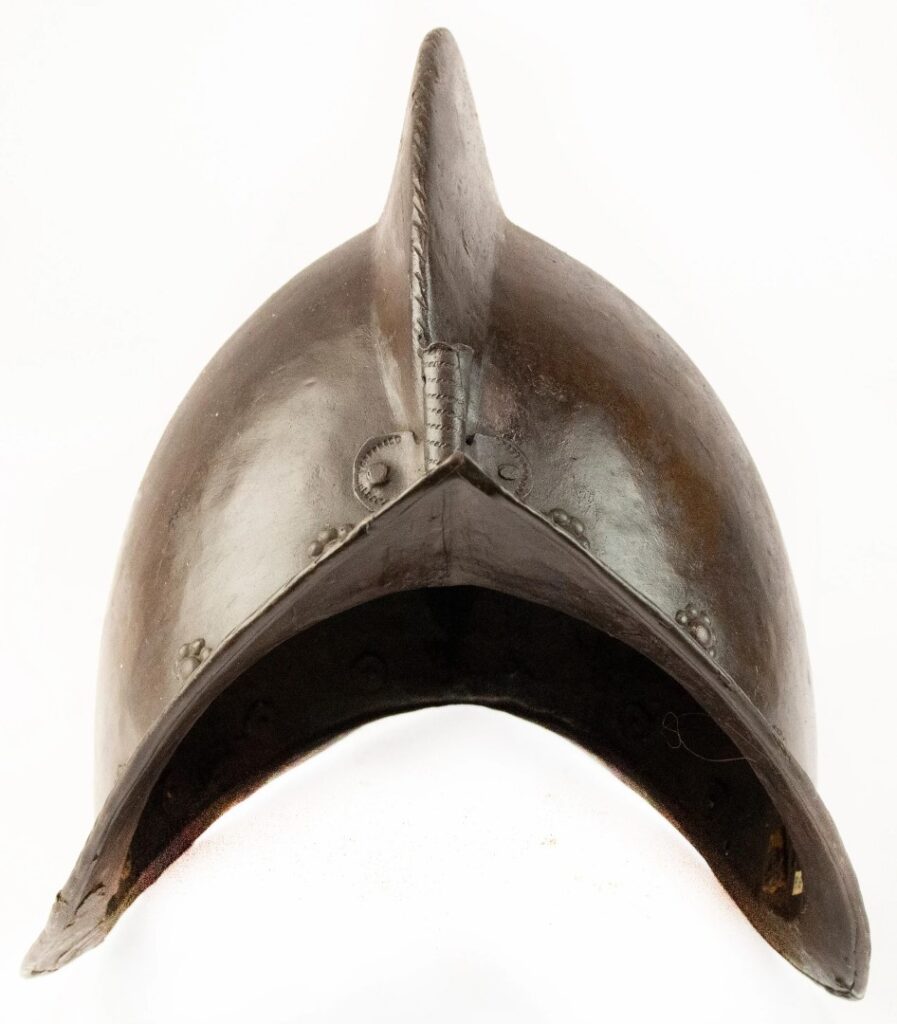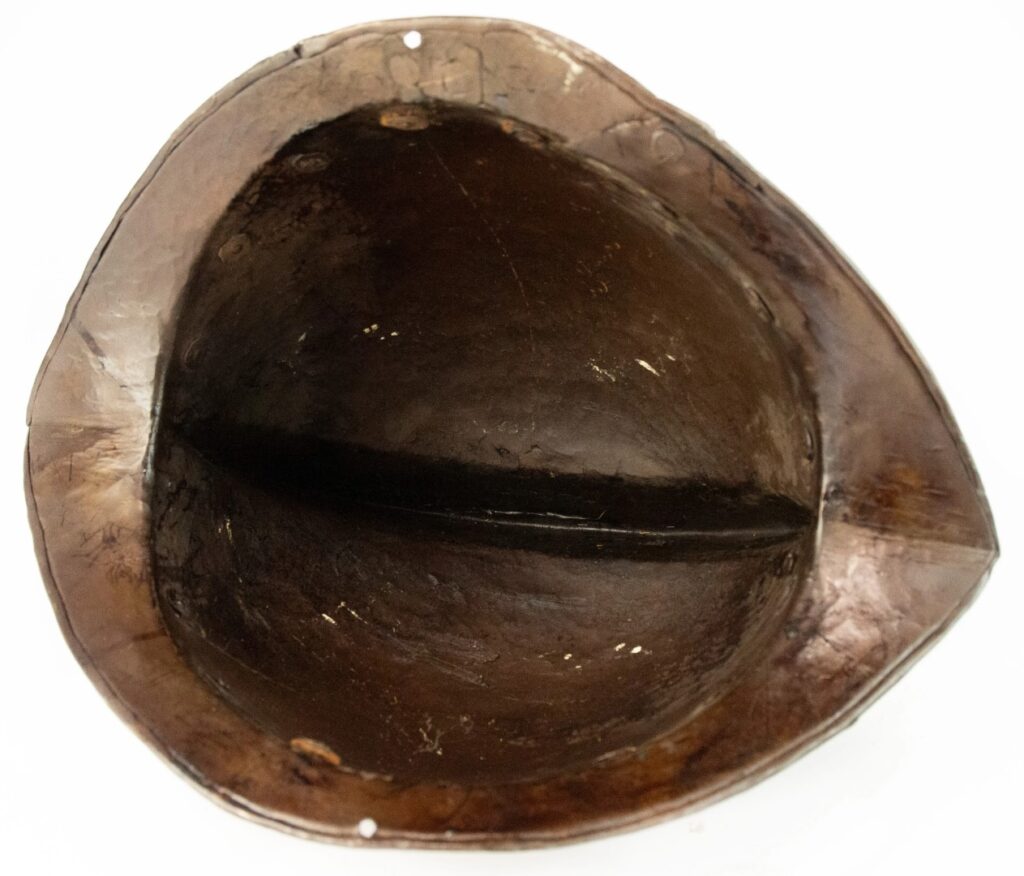1682) NORTH ITALIAN FENTON MORION CIRCA 1580: It’s in great museum condition with a beautiful deep dark patina. Ask any hardcore long-time collector, and they will tell you it’s a great value at under $3.4k!
Discussion: The Fenton group is notable in retaining its original finish. They come up at auctions from time to time, and they are worth owning. This example is one of the best preserved of its group. It is from one of a group of morions sold by Fenton & Sons of 11 New Oxford Street, London, between WWI and WWII. The morions vary a little in the height of their combs and in the form of the brass rosette washers that are fitted under the heads of their lining-rivets, but are otherwise almost identical in their details.
The group also includes some “Spanish” morions (cabassets) of similar character, almost certainly products of the same workshop. A representative selection of these morions was illustrated by Fenton & Sons in an undated circular, a copy of which was formerly in the collection of the late Gerald I. Mungeam of London (photographic copy held in the Royal Armouries Museum, Leeds). According to a tradition still prevalent among English collectors in the 1950s and ‘60s, the morions had been acquired by W. H. Fenton from a storehouse in Spain, where they had been deposited for use by the Spanish Armada in 1588 but never actually called upon for use. However, in a letter dated 23 December 1969, Theodore Egli, an armorer to the Tower Armouries and previously armorer to Samuel Fenton, wrote that “Fenton” (most likely meaning W. H. Fenton) had bought a whole lot of morions in Ireland. Presumably, relics of the Elizabethan wars in Ireland. Fenton must already have been selling them some time before 1933, when one of his clients, James Henderson of Hastings, Sussex, bequeathed two examples, together with the remainder of his collection to the Fitzwilliam Museum, Cambridge.
Comparables: Further examples of the group can be recorded in the Royal Armouries Museum, Leeds, the Glasgow Museum and Art Gallery, the collection of William Reid, London, the collection of Sir Victor Blank, Oxfordshire, and the former collection of Gerald I. Mungeam of London.
Description: Finely formed in one piece with a high-ropped comb and swept brim.
Publication: For a similar example, see The Collector’s Course On Medieval Arms and Armor: A How To Step By Step Program for the Beginner To Advanced Master Collector, 2021, page 158.
Conclusion: This Fenton morion is in superb condition and is priced to sell today. Fenton morions are in high demand, and most hardcore collectors have at least one example. ACT-NOW, you will be happy you did !!!*
Contact Me To Get The Latest Lowest Price Possible From The Owner*

